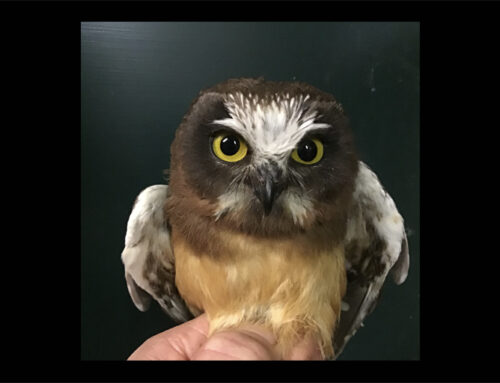We’re effectively stuck in repeat mode when it comes to giving general updates on the owl migration. Northern Saw-whet Owls have continued at a steady trickle, and we have not banded a Boreal Owl since April 25. So, it has been the Long-eared Owls that have kept us busy this past week. We’re reaching the point in the season when long-eared migration may start to drop off. The latter part of long-eared’s spring migration is typically dependent on the previous year’s breeding success, as, in general terms, young long-eareds return north a bit later than adults. Given how slow the saw-whets have been, we’re really hoping that the long-eared numbers don’t drop off too soon. This season’s banding totals currently stand at 194 saw-whets, 19 boreals, 208 long-eareds, five barreds and two great horneds.
We were excited to get our first Long-eared Owl recapture of the season this week. Long-eareds are notorious for the low number of recaptures they generate on migration. We continue to be hopeful that the record seasons we had in spring 2016 and 2017, when we banded 336 and 423 respectively, will eventually produce more recaptures. The recent recapture was one of the 31 long-eareds that Ryan Steiner and I banded in the summer of 2018. It’s the first recapture we’ve had of one of our summer long-eareds, and cooler yet is the fact that it was a recently fledged bird when we banded it. Long-eareds often replace all their feathers in one molt, and it appears that the vast majority of long-eareds do a complete first molt. The recent recapture had replaced all of its flight feathers, except its seventh secondary (S7) on the right wing (pictured below).

The recaptured Long-eared Owl with its retained juvenile seventh secondary (S7) on the right wing.

A crescent moon from earlier this season.

Another shot from earlier in the season after an interesting net check. Alison with a saw-whet, Alec with a boreal, Nova with a long-eared, and Chris with a barred.
Chris Neri & Nova Mackentley
WPBO Spring Owl Banders



